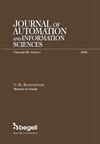利用卷积神经网络、度量学习和优化方法改进人脸识别模型
Q3 Engineering
Journal of Automation and Information Sciences
Pub Date : 2021-09-01
DOI:10.34229/1028-0979-2021-5-11
引用次数: 0
摘要
人脸识别是计算机视觉的主要任务之一。它有许多应用,这导致了这一领域的大量研究。尽管自计算机视觉诞生以来,这一领域的研究一直在进行,但只有借助卷积神经网络才能取得良好的结果。在这项工作中,对卷积神经网络之前的面部识别方法进行了比较分析。考虑了一套神经网络结构、度量学习和优化方法。对卷积神经网络的改进方法进行了大量的实验和比较分析。得到了一种通用的人脸识别模型训练算法。为了比较不同的人脸识别方法,我们选择了一个名为VGGFace2的数据集。它由33.1万张9131人的照片组成。它是使用谷歌搜索引擎中的图像创建的。最初,预先训练的神经网络被用来选择与人类的照片。然后手动检查图像。对于验证样本,我们预留了500人的50张图像,总共25,000张图像。几乎所有的实验都是迭代进行的。例如,我们选择最佳优化器,然后用它来搜索最佳结构。正如预期的那样,具有更多参数和更复杂结构的神经网络在该任务中表现出更好的结果。在被认为是最好的型号是Se-ResNet50。在人脸识别中,度量学习是一种能够达到较高准确率的方法。没有这个方法就不可能解决这个问题。为了优化神经网络,我们考虑了自适应优化器和简单优化器。结果表明,随机梯度下降法是求解该问题的最佳方法,而自适应方法的求解效果较差。总的来说,使用不同的方法,我们能够获得92%的准确度,比基线实验好25.5%。我们认为研究课题下一步的发展方向是:改进神经网络结构,收集更多的数据和应用更好的正则化技术。本文章由计算机程序翻译,如有差异,请以英文原文为准。
IMPROVING FACE RECOGNITION MODELS USING CONVOLUTIONAL NEURAL NETWORKS, METRIC LEARNING AND OPTIMIZATION METHOD
Face recognition is one of the main tasks of computer vision. It has many applications, which has led to a huge amount of research in this area. And although research in the field has been going on since the beginning of the computer vision, good results could be achieved only with the help of convolutional neural networks. In this work, a comparative analysis of facial recognition methods before convolutional neural networks was performed. A set of neural network architectures, methods of metric learning and optimization are considered. There were performed bunch of experiments and comparative analysis of the considered methods of improvement of convolutional neural networks. As a result a universal algorithm for training the face recognition model was obtained. To compare different approaches of face recognition, we chose a dataset called VGGFace2. It consists of 3,31 million images of 9131 people. It was created using images from the Google search engine. Initially, pre-trained neural networks were used to select photographs with humans. The images were then checked mannualy. For the validation sample, we set aside 50 images of 500 people, for a total of 25,000 images. Almost all experiments were performed iteratively. For example, we choose the best optimizer and then we use it to search for best arctitecture. As expected, neural networks with more parameters and more sophisticated architecture showed better results in this task. Among the considered models the best was Se-ResNet50. Metric learning is a method by which it is possible to achieve good accuracy in face recognition. Without this method it would be impossible to solve the problem. To optimize neural networks, we considered both adaptive and simple optimizers. It turned out that the stochastic gradient descent with moment is the best for this problem, and adaptive methods showed a rather poor result. In general, using different approaches, we were able to obtain an accuracy of 92 %, which is 25,5 % better than the baseline experiment. We see next ways for the further development of the research subject: improving neural network architecture, collecting more data and applying better regularization techniques.
求助全文
通过发布文献求助,成功后即可免费获取论文全文。
去求助
来源期刊

Journal of Automation and Information Sciences
AUTOMATION & CONTROL SYSTEMS-
自引率
0.00%
发文量
0
审稿时长
6-12 weeks
期刊介绍:
This journal contains translations of papers from the Russian-language bimonthly "Mezhdunarodnyi nauchno-tekhnicheskiy zhurnal "Problemy upravleniya i informatiki". Subjects covered include information sciences such as pattern recognition, forecasting, identification and evaluation of complex systems, information security, fault diagnosis and reliability. In addition, the journal also deals with such automation subjects as adaptive, stochastic and optimal control, control and identification under uncertainty, robotics, and applications of user-friendly computers in management of economic, industrial, biological, and medical systems. The Journal of Automation and Information Sciences will appeal to professionals in control systems, communications, computers, engineering in biology and medicine, instrumentation and measurement, and those interested in the social implications of technology.
 求助内容:
求助内容: 应助结果提醒方式:
应助结果提醒方式:


